Smith College Presidents
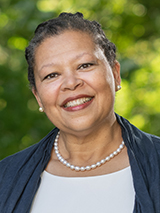
Sarah Willie-LeBreton
2023–Present
Sarah Willie-LeBreton is the 12th president of Smith College. She earned a bachelor of arts degree from Haverford College in 1986, and an M.A. (1988) and Ph.D. (1995) from Northwestern University, all in sociology. After having taught at Colby College (1991–1995) and Bard College (1995–1997) in tenure-track appointments, she was tenured at Swarthmore where she served as coordinator of the Black Studies Program and chair of the Department of Sociology and Anthropology for a total of seventeen years. She was appointed as provost and dean of the faculty at Swarthmore in 2018 and served in that role until 2023.
An accomplished administrator, scholar, and sociologist who studies social inequality and race and ethnicity, Willie-LeBreton is known for her commitment to the liberal arts, strengthening community, and energizing the work of equity and inclusion. She is the author of several dozen articles, essays, reviews, and op-ed columns. Her first book, Acting Black: College, Identity and the Performance of Race, examines how the experiences of Black college alumni of a predominantly white institution (PWI) were distinct from those who attended a comparative HBCU from the waning days of the civil rights movement through the county’s political turn to the right under the Reagan presidency. Her second book, Transforming the Academy: Faculty Perspectives on Diversity and Pedagogy, is a collection of essays to which she has contributed and which she edited. It focuses on the challenges faced by faculty who were previously underrepresented on campuses, including people of color, queer people, neurodivergent people, and people who immigrated to the U.S. It explores their experiences as they become participants in dominant spaces within the American Academy.
Willie-LeBreton considers herself an applied sociologist, and she has worked with a broad range of groups and organizations to understand social dynamics and develop strategies to move toward organizational self-awareness, transformation, compassion, and inclusivity. She is a member of and has been active in the Eastern Sociological Society, Sociologists for Women in Society, the Association of Black Sociologists, and the American Sociological Association (ASA). For several years, she reviewed sociology and affiliated departments as a member of the ASA’s Departmental Resources Group. Her board service has included the Executive Office and Budget of the ASA, Pendle Hill Quaker Center, Haverford College, Benchmark School, the Shalem Institute for Spiritual Formation, and she sits on the advisory board of IIG (Integrated Impact Group) which offers consulting for the educational sector.
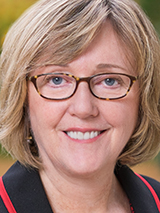
Kathleen McCartney
2013–23
Smith’s 11th president, Kathleen McCartney, took office in 2013. McCartney, former dean of the Harvard Graduate School of Education (HGSE), is an internationally recognized authority on child development and early education. The first in her family to go to college, she graduated summa cum laude from Tufts University with a bachelor of science in psychology and later earned a doctorate in psychology from Yale University. A signature accomplishment of her tenure at HGSE was the creation of a three-year doctorate in educational leadership developed in collaboration with the Harvard Business School and the Kennedy School of Government.
After assuming the presidency, McCartney led a strategic planning effort that resulted in important new academic and co-curricular programs that expand opportunities for women. She forged partnerships with leading organizations, including the Harvard/MIT online education platform known as edX; the MassMutual Life Insurance Company, a supporter of data science initiatives; and the Posse Foundation. Under her leadership, Smith engaged noted architectural designer Maya Lin to re-envision its historic Neilson Library, in the context of its renowned Frederick Law Olmsted–designed campus, and to create a modern intellectual learning common. The $110 million project opened its doors in 2021. Women for the World: The Campaign for Smith, which McCartney led to its culmination in 2016, raised $486 million, setting a record for the largest and most successful campaign ever undertaken by a women’s college. Notably, the campaign raised close to $130 million for financial aid, including 103 new endowed scholarships. McCartney’s presidency made increasing access for every student who wants to study at Smith a central focus. In October 2021, McCartney announced that the college will eliminate loans from its undergraduate financial aid packages, beginning in fall 2022, replacing them with college grants.
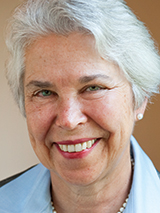
Carol T. Christ
2002–13
A widely respected scholar of Victorian literature, Carol T. Christ took up her duties as Smith’s 10th president in June 2002. In her first years at Smith, Christ launched an energetic program of outreach, innovation and long-range planning, including capital planning. She encouraged the development of coursework emphasizing fluency in American cultures and the diversity of experience of American ethnic groups and launched a review, conducted by members of the Smith faculty and outside scholars, to determine the distinctive intellectual traditions of the Smith curriculum and areas on which to build. Issued in 2007, The Smith Design for Learning: A Plan to Reimagine a Liberal Arts Education builds upon Smith’s history of pedagogical innovation, identifying priority areas—among them, international studies, environmental sustainability, and community engagement—for significant investment over the coming decade.
In the area of capital planning, a number of major building projects came to fruition during Christ’s tenure: the renovation and expansion of the Brown Fine Arts Center; a dramatic new campus center; a renovated Lyman Conservatory; the impressive Olin Fitness Center; new homes for the Poetry Center and the Mwangi Cultural Center; the renovation of Lilly Hall, home of the college’s School for Social Work; and the construction of Conway House, an apartment building for Ada Comstock Scholars with children. Ford Hall, a state-of-the-art, sustainably designed classroom and laboratory facility named in recognition of its lead donor, the Ford Motor Company Fund, opened in fall 2009; it serves as home to the college’s pioneering Picker Engineering Program as well as the departments of molecular biology, chemistry, biochemistry and computer science. Under Christ’s leadership, Smith made significant commitments to environmental sustainability in its curriculum and campus operations, including the construction of a co-generation facility for power and heat and the dedication of the MacLeish Field Station, a 200-acre woodland tract in Whately, Mass., for environmental education and research.
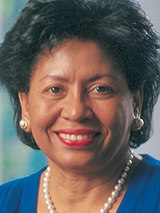
Ruth Simmons
1995–2001
In December 1994 Ruth Simmons was chosen as Smith’s ninth president. With a long and distinguished career in higher education behind her, Simmons was the first African-American woman to head any top-ranked American college or university. Simmons galvanized the campus through an ambitious campus-wide self-study process that resulted in a number of landmark initiatives, including Praxis, a program that allows every Smith student the opportunity to elect an internship funded by the college; an engineering program, the first at a women’s college; programs in the humanities that include the establishment of a poetry center and a peer-reviewed journal devoted to publishing scholarly works by and about women of color; and curricular innovations that include intensive seminars for first-year students and programs to encourage students’ speaking and writing skills.
A number of building projects were launched during Simmons’ administration; most significant was the Brown Fine Arts Center, a $35-million expansion and renovation of the Smith College Museum of Art, art department and art library. Ground was broken in 2002 for a campus center, and renovation and expansion of the Lyman Conservatory was completed in 2003.
Simmons left Smith in June 2001, assuming the presidency of Brown University. John M. Connolly, Smith’s first provost, served as acting president for one year, skillfully guiding the college through the trauma of September 11, 2001, and its aftermath.
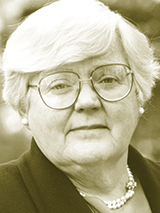
Mary Maples Dunn
1985–95
The college that President Conway left to her successor was in some ways very different from the college served by Presidents Seelye, Burton and Neilson. When Mary Maples Dunn came to Smith in 1985 after many years as a professor of history and then as dean of Bryn Mawr College, Smith’s student body had diversified. During its early decades the student body had been overwhelmingly Protestant, but by the 1970s, Roman Catholic and Jewish college chaplains served alongside the Protestant chaplain, reflecting the students' religious and ethnic variety. All racial, ethnic and religious groups are now well represented on campus, evidence of Smith’s continuing moral and intellectual commitment to diversity.
In her decade as president, Mary Maples Dunn led the college through exciting and challenging times. During her tenure, the college raised more than $300 million, constructed two major buildings and renovated many more, enhanced communication on and off campus, attracted record numbers of applicants (while holding the quality of those applicants steady) and doubled the value of its endowment. Computer technology transformed the way Smith conducted its business. And the curriculum became broader in scope, with five new majors and increased course offerings in non-Western and neglected American cultures.
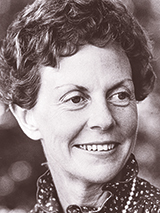
Jill Ker Conway
1975–85
In the late 1960s and early 1970s another important movement—the women’s movement—was gathering momentum. This was to have a profound effect on American society and to confirm the original purpose of Smith College. The college began its second century in 1975 by inaugurating its first woman president, Jill Ker Conway, who came to Smith from Australia by way of Harvard and the University of Toronto. She was a charismatic and energetic leader with a vision for women's education, and her administration was marked by three major accomplishments: a large-scale renovation and expansion of Neilson Library, evidence of Smith’s undiminished concern for the heart of the liberal arts; the rapid growth of the Ada Comstock Scholars Program, through which women beyond the traditional college age could earn a Smith degree; and exceptionally successful fund-raising efforts. Also during President Conway’s administration, the Career Development Office was expanded to better counsel Smith students and alumnae about career opportunities and graduate training for women. Recognizing the rapidly growing emphasis on fitness and athletics for women, Smith built the Ainsworth Gymnasium and broke ground for new indoor and outdoor track and tennis facilities. President Conway’s contributions underscored her commitment to women’s colleges and a liberal arts education in today's society. Since leaving Smith, Conway has written an acclaimed series of memoirs; her 2001 book, A Woman's Education, concerns her Smith years.
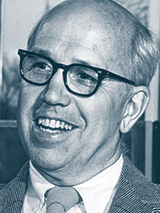
Thomas Corwin Mendenhall
1959–75
When Thomas Corwin Mendenhall came from Yale in 1959 to become Smith’s sixth president, both the college and the country at large were enjoying peace and prosperity. During the 1960s, social and cultural changes stirred the college profoundly, and a series of powerful movements influenced the larger society and the academic world alike. In response to the needs of increasingly independent and ambitious students, the curriculum was thoroughly revised. College-wide requirements were set aside and independent study encouraged. The college made more varied educational experiences available to Smith undergraduates by extending cooperation with its neighbors—Amherst, Hampshire and Mount Holyoke colleges and the University of Massachusetts. And Smith joined other private colleges in the Northeast to develop the Twelve College Exchange Program. The college added buildings with the most modern facilities for the study of the natural sciences, performing arts and fine arts. The new Fine Arts Center included the Smith College Museum of Art, now one of the most distinguished college museums in the country.
The 1960s saw the civil rights movement, the students’ rights movement and the anti-war movement take root and grow at many of the country’s universities and colleges, including Smith. Thanks to these movements and to the wisdom, tact and humor of President Mendenhall, the college emerged from the 1960s with a more precise awareness of student needs and an active, practical sense of social responsibility.
Meanwhile, life in the college houses was changing. The old rules governing late evenings out and male visitors were relaxed, then abandoned. Not surprisingly, when Vassar began to accept men, and Yale, Princeton and Dartmouth to accept women as candidates for degrees, some members of the college community wondered whether Smith should also become coeducational. In 1971, a committee of trustees, faculty, administration, students and alumnae studied the question in detail. The committee concluded that admitting men as candidates for the Smith degree would detract from the founding purpose of the college, the best possible education for women.
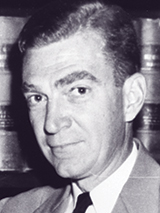
Benjamin Fletcher Wright
1949–59
Benjamin Fletcher Wright came from Harvard to become Smith’s fifth president in 1949. The college had by then resumed its regular calendar and completed several much-needed building projects, including a new heating plant and a student recreation center named for retiring President Davis. The most memorable achievements of President Wright’s administration were the strengthening of Smith's financial position and the defense of academic freedom during the 1950s.
In 1950, the $7 Million Fund Drive was triumphantly completed, enabling the college to improve facilities and increase faculty salaries. In 1955, the Helen Hills Hills Chapel was completed, giving Smith its own place of worship. The early 1950s were not, though, easy years for colleges; McCarthyism bred a widespread suspicion of any writing or teaching that might seem left of center. In defending his faculty members' right to political and intellectual independence, President Wright showed great courage and statesmanship. Complementing his achievements was the financial and moral support of Smith’s Alumnae Association, by now the most devoted and active group of its kind in the country. Before President Wright’s term ended, the college received a large gift for constructing a new faculty office and classroom building to be named for him.

Herbert Davis
1940–49
President Neilson retired in 1939, just before the outbreak of World War II, and for one year Elizabeth Cutter Morrow, an alumna trustee, served as acting president. Herbert Davis took office as Smith’s fourth president in 1940 and reaffirmed the contributions that a liberal arts college could make to a troubled world. Already during World War I a group of Smith alumnae had gone to France to do relief work in the town of Grécourt; a replica of Grécourt’s chateau gates is now emblematic of the college.
Soon after the 1941 bombing of Pearl Harbor, the college agreed to provide facilities on its campus for the first Officers’ Training Unit of the Women’s Reserve, or WAVES. The college added a summer term from 1942 to 1945 so some students could graduate more quickly and go on to government, hospital or military service. Though physically isolated by travel restrictions, the college retained its cosmopolitan character as refugees came to lecture, teach and study. And foreign films were shown regularly in Sage Hall—a practice that would give generations of students their sensitivity both to other cultures and to an important new art. President Davis' administration was marked by intensified academic life, reflecting his belief that serious study was a way of confronting the global threat to civilization.
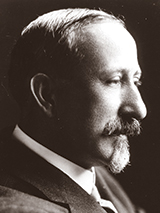
William Allan Neilson
1917–39
When William Allan Neilson became president in 1917, Smith was already one of the largest women’s colleges in the world. President Neilson shrewdly developed the advantages of large academic institutions while maintaining the benefits of a small one. Under his leadership, the size of the faculty continued to increase while the number of students remained at about 2,000. The curriculum was revised to provide a pattern still followed in many American colleges—a broad foundation in various fields of knowledge, later complemented by the more intensive study of a major subject. The college expanded honors programs and initiated interdepartmental majors in science, landscape architecture and theatre. The School for Social Work, a coeducational graduate program, was founded. And more college houses were built, mainly in the Georgian complex called “the Quad,” so that every student could live on campus.
Not only did President Neilson help make Smith one of the leading colleges in the United States, whether for men or women, but he also developed it into an institution of international distinction and concerns. President Neilson, himself a Scotsman, married to a well-educated German woman, transformed the college from a high-minded but provincial community in the hinterland of Massachusetts into a cosmopolitan center constantly animated by ideas from abroad. Between the two world wars, he brought many important exiled or endangered foreign teachers, scholars, lecturers and artists to the college. Meanwhile, as long as peace lasted, Smith students went to study in France, Italy and Spain on the Junior Year Abroad Program instituted by the college in 1924.
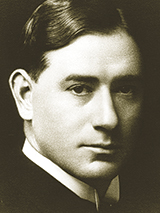
Marion LeRoy Burton
1910–17
Smith’s second president, Marion LeRoy Burton, took office in 1910. President Burton, a graduate of Yale Divinity School, was a gifted public speaker with an especially acute business sense. He used these talents to help the college raise the amazing sum of $1,000,000—a huge endowment campaign for any college at that time. With the college’s increased endowment, President Burton was able to increase faculty salaries substantially and improve the faculty-to-student ratio. President Burton's fund drive also invigorated the alumnae, bringing them closer to the college than ever before and increasing their representation on the board of trustees.
Along with improving the financial state and business methods of the college, President Burton also contributed to a revision of the curriculum and initiated college honors programs to recognize outstanding students. He also helped to organize a cooperative admission system among Smith, Mount Holyoke, Wellesley and Vassar, the finest women’s colleges of the day. President Burton’s accomplishments are commemorated today by Burton Hall, the science building that his fund drive helped to finance.
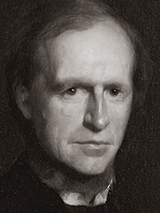
Laurenus Clark Seelye
1873–1910
Smith College opened in the fall of 1875 with 14 students and six faculty under the presidency of Laurenus Clark Seelye. Its small campus was planned to make the college part of what John M. Greene called “the real practical life” of a New England town, rather than a sequestered academic preserve. College Hall, the Victorian Gothic administrative and classroom building, dominated the head of Northampton’s Main Street. For study and worship, students used the town’s well-endowed public library and various churches. Instead of a dormitory, students lived in a “cottage,” where life was more familial than institutional. Thus began the "house" system that, with some modifications, the college still employs today. The main lines of Smith’s founding educational policy, laid down in President Seelye’s inaugural address, remain valid today: then as now, the standards for admission were as high as those of the best colleges for men; then as now, a truly liberal education was fostered by a broad curriculum of the humanities, the fine arts and the natural and social sciences.
During the 35 years of President Seelye’s administration, the college prospered mightily. Its assets grew from Sophia Smith’s original bequest of about $400,000 to more than $3,000,000; its faculty to 122; its student body to 1,635; its buildings to 35. These buildings included Alumnae Gymnasium, site of the first women’s basketball game, and William Allan Neilson Library, one of the best-stocked undergraduate libraries in the country.
